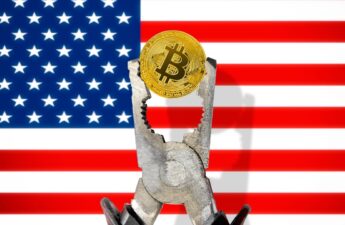December’s Federal Open Market Committee (FOMC) meeting was a huge boon for markets. Risk assets — including cryptocurrencies — soared as the central bank appeared to take a more dovish stance on monetary policy. But the markets may be in for a nasty surprise in 2024 as the Federal Reserve faces an uphill battle against price increases, which may well force policymakers to hike again to reach their 2% inflation target.
The overwhelming expectation right now is that the Fed has won its battle against inflation. However, this is not what economic analysis shows. In fact, the recent slowdown in price growth is very likely to prove temporary — with inflation soaring again next month to finish the year around 3.5%, and remaining sticky well into 2024. This will be problematic for the central bank, whose dual mandate stipulates it must control prices while maintaining maximum employment.
So far, it has certainly succeeded with the latter. Unemployment remains at historically low levels, dropping from 3.9% in October to 3.7% in November. The economy added 199,000 jobs that month, beating analysts’ expectations. Wage growth also continued to outstrip inflation for the fifth month in a row in October, rising again to 5.7% after a brief hiatus.
United States unemployment rate from January 2022 to November 2023. Source: Bureau of Labor Statistics
This, naturally, gives consumers more confidence to spend. Contrary to Fed Chairman Jerome Powell’s assertion during his last press conference that people have now “bought so much stuff … they have nowhere to put it,” we saw a 2.1% increase in personal spending to $18.86 trillion in November. In short, the economic slowdown required to bring inflation down to target is nowhere to be seen.
The tight jobs market is a problem because it’s causing inflation in services, which account for as much as 42% of the overall U.S. CPI index. While we are seeing goods inflation coming down, services prices continue to increase because wages are increasing. Don’t expect this to go away anytime soon. Inflation is likely to remain sticky for much longer than the market or the Fed anticipates.
Related: Sky-high interest rates are exactly what the crypto market needs
On top of this, we see a number of structural economic shifts that will prove inflationary, which policymakers may be overlooking. Firstly, we are witnessing a gradual move away from globalization and toward protectionism. Mentions of reshoring, nearshoring, and onshoring during American companies’ earnings calls increased by an average of 216% year-over-year since the start of 2022 as manufacturing returns to home shores. However, the “Made in USA” label will come with a heftier price tag than its Chinese-made counterparts. The onshoring trend is further supported by government spending on infrastructure, green energy, technological innovation, and the semiconductor supply chain.
It also doesn’t help that the cost of capital has massively increased due to interest rate hikes. And, if the Fed keeps rates higher for longer, this will translate to a slowdown in innovation, as Silicon Valley startups struggle to gain funding. This means that the productivity gains everyone hopes to see from artificial intelligence (AI) won’t come as quickly as projected. Though there is no doubt they are coming, this will take at least three to four years to materialize, leaving industries struggling to fill the gap in the short term.

Then there’s the demographic shift. Over the last 50 years, we have seen a steady decline in the proportion of middle-income households in the U.S. — from 61% to 50%. And while this has led to an increase in the lower-income segment from 25% to 29%, the proportion of upper-income households has also soared from 14% to 21%. These higher earners are major contributors to the spending boom we are seeing today, particularly in the housing market, where demand has remained remarkably strong despite sky-high interest rates.
Related: Bitcoin beyond 35K for Christmas? Thank Jerome Powell if it happens
The Bureau of Labor Statistics (BLS) reported yet another monthly price increase in the shelter category, marking a staggering 43-month upward stint. Real-time U.S. CPI data is at odds with this, showing a 0.68% decline in November, but research shows that demand remains high and supply tight. This will, no doubt, perpetuate the housing affordability crisis and contribute to sticky inflation as we head into 2024. In fact, we have already seen prices in this category begin to tick up again in the last two weeks.
While oil prices plummeted in November — making the transportation sector the biggest downside contributor to inflation — there is no reason to believe this will last. The ongoing conflict in Gaza and planned OPEC+ production cuts are already starting to drive up prices at the pump.
All these drivers will conspire to cause a resurgence in inflation in December, giving policymakers an early January headache that has nothing to do with post-Christmas hangovers. The FOMC may have taken a dovish stance this week, but Powell has continuously reiterated his commitment to 2% inflation. In 2024, he may find himself advocating for another rate hike to keep his promise. So hold your horses, markets — it’s too early to run that victory lap.
Oliver Rust is the head of product at Truflation, an inflation data aggregator. He served previously as the CEO of Engine Insights and as global senior vice president of financial services for The Nielsen Company.
This article is for general information purposes and is not intended to be and should not be taken as legal or investment advice. The views, thoughts and opinions expressed here are the author’s alone and do not necessarily reflect or represent the views and opinions of Cointelegraph.omy,
Source: https://cointelegraph.com/news/another-federal-reserve-rate-hike-in-the-cards



